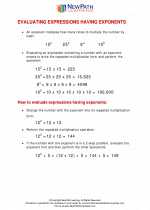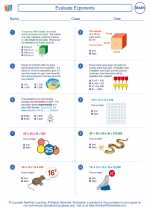Linear Polynomial
A linear polynomial is a polynomial of degree 1, which means it has a highest power of 1 for its variable. It can be written in the form:
ax + b
Where 'a' and 'b' are constants, and 'x' is the variable. The value of 'a' cannot be zero for it to be a linear polynomial.
Understanding the Components:
Coefficient (a): The coefficient 'a' represents the slope or gradient of the linear polynomial. It determines the rate of change of the polynomial.
Constant (b): The constant 'b' represents the y-intercept of the linear polynomial. It is the point where the polynomial intersects the y-axis.
Graphical Representation:
A linear polynomial represents a straight line when graphed on a Cartesian plane. The coefficient 'a' determines the slope of the line, while the constant 'b' determines the y-intercept.
Example:
Consider the linear polynomial 3x + 2. Here, the coefficient 'a' is 3 and the constant 'b' is 2. This polynomial represents a line with a slope of 3 and a y-intercept of 2.
Study Guide:
- Understand the concept of a polynomial and its degree.
- Identify the degree of a polynomial to determine if it is linear.
- Learn to recognize the standard form of a linear polynomial: ax + b.
- Practice graphing linear polynomials on a Cartesian plane.
- Understand the relationship between the coefficient and the slope of the line.
- Practice solving problems involving linear polynomials and their applications.
By mastering the concept of linear polynomials, you will develop a strong foundation in algebra and be better prepared for more advanced topics in mathematics.
.◂Math Worksheets and Study Guides Sixth Grade. Evaluate Exponents

 Worksheet/Answer key
Worksheet/Answer key
 Worksheet/Answer key
Worksheet/Answer key
 Worksheet/Answer key
Worksheet/Answer key
